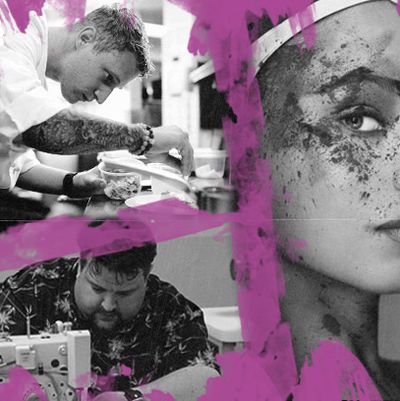
When I was a kid, I learned from TV all the time. I learned Spanish phrases from Sesame Street; about the Fibonacci sequence from Square One; and that I did not have to take anyone’s word for it from Reading Rainbow. As an adult, I certainly learned about food science from Good Eats and America’s Test Kitchen, and maybe some enthusiasm for art from The Joy of Painting. But my main TV education is coming from reality shows that are in no way designed to teach their viewers things. I can’t help it, though. I really did learn how to pose more flatteringly in photos from watching Top Model.
I’m a big fan of reality-contest shows, and I have picked up some skills in my travels. Top Chef affected the way I cook — definitely with more acid, per Gail’s constant request, and also with more salt, per Padma’s recurring critiques — but it also affected the way I talk about food. “Balance” was not something I was super concerned about in dishes before Top Chef, but now here I am, thinking about how to “cut” through sweetness or “brighten” richness in whatever nonsense I’m pretending to know how to make. Thanks a lot, Tom Colicchio.
Given all the “smize” bullshit and the terrible talk show and America’s Next Top Model’s tragic decline in quality, it’s easy to forget that once upon a time, Tyra Banks was a really good model. She still is! And every so often on an episode of ANTM, she’ll actually coach the contestants on how to pose more effectively, how not to hold tension in their hands (to avoid looking like they have doll hands), and how to extend their chins to make their necks seem more elegant. It’s one thing when she critiques the contestants during judging, but the really helpful episodes are when she is either on set or runs whatever that week’s “challenge” is. More like this, she shows her destined-for-nothing acolytes. I’m not going on any go-sees anytime soon, but yeah, I move my chin a little and smile a little differently when posing for a photo.
The judges on Project Runway taught me to be more conscious of fashion proportions, about the dangers and benefits of things cut on the bias — and what “cut on the bias” means. When I look at images from fashion shows, I think about the styling, too, not just the clothing, even though I know PR is wholly divorced from how anything in the actual fashion industry works. The judges on Best Ink and Ink Master taught me to spot subtly shaky lines and to consider dark black work even in color tattoos. (How many tattoo Instagrams do I follow? A lot.) Tabitha’s Salon Takeover — not a contest show, though still very informative — made me way more conscious of how grimy a salon can get. Top Design only lasted two seasons, but Kelly Wearstler’s advice on mixing textures (do it) remains with me to this day.
Thanks to Top Shot, I know crossbows shoot bolts, not arrows. Thanks to RuPaul’s Drag Race, I know how much bronzer-contouring is too much bronzer-contouring. Thanks to Dream Job, I learned that reading a TelePrompTer is much harder than it looks. I feel this has made me a more compassionate human in general.
I don’t know that picking up these skills and ideas is why I like task-oriented reality shows — in general, I’m drawn to stories about people who are good at things. But whenever it’s time to cast America’s Top Reality Show Information Absorber, I am so, so ready.



